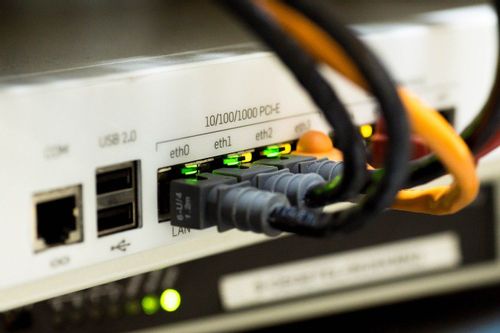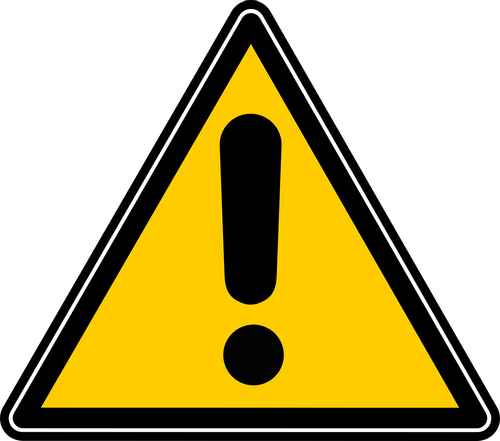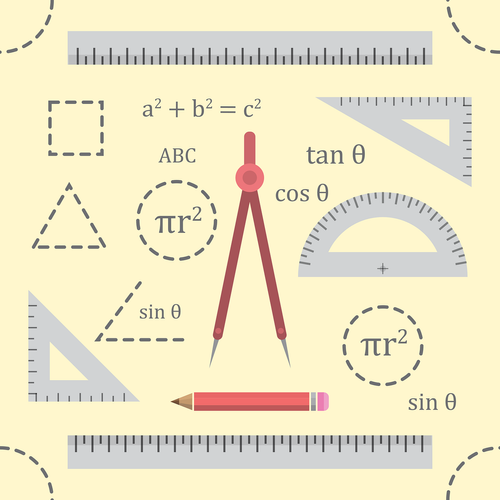Standards Packages
iTeh together with SIST has developed and compiled a comprehensive collection of standard packages to support your standard requirements. Our packages cover an array of content that includes quality management, risk management, road vehicles, machine safety, and much more. With over 200 packages to choose from, you are sure to find a collection to suit your standard needs.
Latest Standards
This document provides test procedures for evaluating coated proppants used in hydraulic fracturing operation. This document provides a consistent methodology for tests performed on coated proppants used in hydraulic fracturing operations.
- Standard28 pagesEnglish languagesale 15% off
- Standard30 pagesFrench languagesale 15% off
- Amendment5 pagesEnglish languagesale 10% offe-Library read for1 day
This document specifies a method for measuring the pH value of dispersions and coating materials using pH sensors with ion-sensitive field-effect transistor (ISFET) technology.
- Standard11 pagesEnglish languagesale 15% off
- Standard12 pagesFrench languagesale 15% off
This document gives guidance on the qualification of the performance of a computed tomography (CT) system with respect to various testing tasks. This document is applicable only to industrial imaging (i.e. non-medical applications) and provides a consistent set of definitions of CT performance parameters, including the relationship between these performance parameters and CT system specifications. This document is applicable to industrial computed tomography. This document does not apply to other techniques of tomography such as translational tomography and tomosynthesis.
- Standard10 pagesEnglish languagesale 15% off
- Standard11 pagesFrench languagesale 15% off
This document specifies performance requirements for electrofusion control unit (ECU) for use with polyethylene (PE) electrofusion fittings conforming to ISO 4437-3,[ REF Reference_ref_6 \r \h 1 08D0C9EA79F9BACE118C8200AA004BA90B0200000008000000100000005200650066006500720065006E00630065005F007200650066005F0036000000 ]ISO 4427-3[ REF Reference_ref_7 \r \h 2 08D0C9EA79F9BACE118C8200AA004BA90B0200000008000000100000005200650066006500720065006E00630065005F007200650066005F0037000000 ] and ISO 15494.[ REF Reference_ref_8 \r \h 3 08D0C9EA79F9BACE118C8200AA004BA90B0200000008000000100000005200650066006500720065006E00630065005F007200650066005F0038000000 ] NOTE 1 Electrofusion fittings conforming to other documents, e.g. EN 1555-3[ REF Reference_ref_9 \r \h 4 08D0C9EA79F9BACE118C8200AA004BA90B0200000008000000100000005200650066006500720065006E00630065005F007200650066005F0039000000 ] and EN 12201-3,[ REF Reference_ref_10 \r \h 5 08D0C9EA79F9BACE118C8200AA004BA90B0200000008000000110000005200650066006500720065006E00630065005F007200650066005F00310030000000 ] can also be within the scope of this document. The system designed to manage the transfer of data collected during the fusion process is out of the scope of this document. NOTE 2 Data format and retrieval system are specified in ISO 12176-5. NOTE 3 Parameters for the electrofusion cycle are defined in ISO 13950 and ISO 12176-5. Data for traceability purposes are given in ISO 12176-3, ISO 12176-4 and ISO 12176-5. Electrical safety is out of the scope of this document. NOTE 4 The manufacturer of ECU is informed that different safety regulations are in force in different countries or regional area, e.g.: U.S.A., Europe, etc. ECU designed for only one brand of fittings is out of the scope of this document. Excluding any of the requirements specified in this document is not acceptable when an organization claims conformity to this document.
- Standard20 pagesEnglish languagesale 15% off
This document specifies the manual methods used for obtaining samples of liquid or semi-liquid hydrocarbons, tank residues and deposits from fixed tanks, railcars, road vehicles, ships and barges, drums and cans, or from liquids being pumped in pipelines. It applies to the sampling of liquid products, including crude oils, intermediate products, synthetic hydrocarbons and bio fuels, which are stored at or near atmospheric pressure, or transferred by pipelines as liquids at elevated pressures and temperatures. The sampling procedures specified are not intended for the sampling of special petroleum products which are the subject of other International Standards, such as electrical insulating oils (covered in IEC 60475), liquefied petroleum gases (covered in ISO 4257), liquefied natural gases (covered in ISO 8943) and gaseous natural gases (covered in ISO 10715). This document refers to methods of sampling and sampling equipment in use at the time of writing. It does not exclude the use of new equipment, provided that such equipment enables samples to be obtained according to the requirements and procedures of this document.
- Standard66 pagesEnglish languagesale 15% off
- Standard73 pagesFrench languagesale 15% off
- Standard2 pagesEnglish languagesale 15% off
- Corrigendum3 pagesEnglish languagesale 10% offe-Library read for1 day
This document covers the type testing of valve stem seals using a test fixture that is designed and fully defined to be representative of the performance of a valve using similar geometry. This document is applicable to stem seals for multi-turn, linear and quarter turn valves. It is intended to provide comparative type test results confirming the performance of seal manufacturers’ stem seal designs. This document is not intended to replace type testing of complete valve assemblies or valve production testing. Compliance with this document is not intended to be a mandatory qualification test to be completed for a stem seal design prior to testing a valve to the requirements of ISO 15848-1. Compressible seals with and without live loading, elastomers and pressure energized seals are in the scope of this document. Corrosion tests are not included in this document.
- Standard24 pagesEnglish languagesale 15% off
This document specifies general conditions, defines terms, gives practical guidelines, and establishes the basic principles of the component tests used in the other parts of the ISO 11452 series for determining the immunity of electronic components of passenger cars and commercial vehicles to electrical disturbances from narrowband radiated electromagnetic energy, regardless of the vehicle propulsion system (e.g. spark-ignition engine, diesel engine, electric motor). The electromagnetic disturbances considered are limited to continuous narrowband electromagnetic fields. A wide frequency range (d.c. and 15 Hz to 18 GHz) is allowed for the immunity testing of the components in the ISO 11452 series.
- Standard47 pagesEnglish languagesale 15% off
This document specifies the characteristics of prevailing torque (all metal) hexagon high nuts, in steel and stainless steel, with metric fine pitch thread 8 mm to 39 mm, and with product grades A and B. NOTE These nuts are designed with an overall height hmin = mmin (as specified in ISO 898-2 and ISO 8674 for style 2) plus the prevailing torque feature. hmax has been established in function of hmin; therefore, the tolerance (hmax – hmin) does not follow the ISO code system for tolerances (IT system). The wrenching height mw,min corresponds to the values specified for style 1. If in certain cases other specifications are requested, property classes and stainless steel grades can be selected from ISO 898-2 or ISO 3506-2.
- Standard6 pagesEnglish languagesale 15% off
- Standard6 pagesFrench languagesale 15% off
This document describes the introduction of radiated immunity testing for the components and vehicles equipped with V2X communications. The link communication connection and V2X scenario simulation are considered to make the V2X functions and their communications operate normally during the immunity testing. Examples of monitoring are also discussed to show the electromagnetic interference reactions of the device with V2X under test. In addition, test hints are described to provide information on radiated immunity for V2X. Technical specifications are not within the scope of this document.
- Technical report47 pagesEnglish languagesale 15% off
IEC 62282-6-401:2025 covers the requirements for the performance test methods of a micro fuel cell/battery power system, consisting of a fuel cell system with secondary battery for laptop computers.
For this purpose, this document covers electrical performance tests for the fuel cell/battery hybrid system. This document also covers performance test methods which focus on the power and data interchangeability of the micro fuel cell power system and laptop computer and other characteristics for balance of plant (BOP) installed for laptop computer applications with a fuel cell/battery hybrid system. This document applies to gaseous hydrogen-fuelled fuel cell power, liquid hydrogen-fuelled fuel cell power, direct methanol fuel cell power, and battery hybrid power pack systems. The following fuels are considered within the scope of this document:
- gaseous hydrogen;
- liquid hydrogen compounds;
- methanol.
- Standard23 pagesEnglish languagesale 10% offe-Library read for1 day
This document specifies equipment and procedures for determining the tensile strength and elongation of rectangular and triaxial glass fibre meshes which are used for the reinforcement of the base coat in external thermal insulation composite kits with renders (ETIC kits).
- Standard11 pagesEnglish languagesale 10% offe-Library read for1 day
This document specifies the requirements and/or measures to eliminate the hazards or reduce the risks in the following groups of stationary grinding machines which are designed primarily to shape metal by grinding:
— Group 1: manually controlled grinding machines without power operated axes and without numerical control;
— Group 2: manually controlled grinding machines with power operated axes and limited numerically controlled capability, if applicable;
— Group 3: numerically controlled grinding machines.
NOTE 1 For detailed information on the groups of grinding machines, see 3.1 and 3.2.
NOTE 2 Requirements in this document are, in general, applicable to all groups of grinding machines. If requirements are applicable to some special group(s) of grinding machines only, then the special group(s) of grinding machine(s) is/are specified.
This document covers the significant hazards listed in Clause 4 and applies to ancillary devices (e.g. for workpieces, tools, workpiece holding devices and handling devices), which are integral to the machine.
This document also applies to machines which are integrated into an automatic production line or grinding cell in as much as the hazards and risks arising are comparable to those of machines working separately.
This document also includes in Clause 7 a minimum list of safety-relevant information which the manufacturer has to provide to the user. See also ISO 12100:2010, Figure 2, which illustrates the interaction of the manufacturer’s and user’s responsibility for the operational safety.
The user's responsibility to identify specific hazards (e.g. fire and explosion) and reduce the associated risks can be critical (e.g. whether the central extraction system is working correctly).
Where additional metalworking processes (e.g. milling, turning, laser processing) are involved, this document can be taken as a basis for safety requirements. Specific information on hazards arising from other metalworking processes are covered by other International Standards.
This document applies to machines that are manufactured after the date of issue of this document.
This document does not apply to stationary honing, polishing and belt grinding machines. This document does not apply to transportable motor-operated electric tools in accordance with IEC 61029-2-4 and IEC 61029-2-10.
- Standard147 pagesEnglish languagesale 10% offe-Library read for1 day
IEC 61800-9-2:2023 specifies energy efficiency indicators of power electronics (complete drive modules (CDM), input or output sub drive modules (SDM), power drive systems (PDS) and motor starters, all used for motor driven equipment.
This document is a group energy efficiency publication according to IEC Guide 119 and specifies the methodology for the determination of losses of the complete drive module (CDM), the sub drive module (SDM), the power drive system (PDS) and the motor system.
It defines IE and IES classes, their limit values and provides test procedures for the classification of the overall losses of the motor system.
Furthermore, this document proposes a methodology for the implementation of the best energy efficiency solution of drive systems. This depends on the architecture of the motor driven system, on the speed/torque profile and on the operating points over time of the driven load equipment. It provides a link for the energy efficiency evaluation and classification of the extended product.
This edition includes the following significant technical changes with respect to the previous edition:
a) Additional IES Classes defined to IES5;
b) Removed reference motor loss data and now point to IEC 60034-30-2;
c) Expanded and modified factors in Clause 6 for CDMs;
d) Annex C is now the Mathematical Model for CDM Losses;
e) Moved the mathematical model for the CDM to Annex C;
f) Added Sub Drive Input Module and Sub Drive Output Modules to Annex B;
g) Annex D is now the Converter Topology (old Annex C);
h) Annex E is now the Interpolation of Motor Losses (Old Annex D);
i) Annex E expanded to include various motor connections and updated interpolation method;
j) New Annex E for determination of Interpolation Coefficients;
k) Annex F is the old Annex E;
l) New Annex J Explanation of Correction Factors for the Reference Losses in Table 8.
- Standard137 pagesEnglish languagesale 10% offe-Library read for1 day
This document provides a common approach and guidance to those undertaking assessment of the major safety hazards as part of the planning, design, and operation of LNG facilities onshore and at shoreline using risk-based methods and standards, to enable a safe design and operation of LNG facilities. The environmental risks associated with an LNG release are not addressed in this document.
This document is applicable both to export and import terminals but can be applicable to other facilities such as satellite and peak shaving plants.
This document is applicable to all facilities inside the perimeter of the terminal and all hazardous materials including LNG and associated products: LPG, pressurized natural gas, odorizers, and other flammable or hazardous products handled within the terminal.
The navigation risks and LNG tanker intrinsic operation risks are recognised, but they are not in the scope of this document. Hazards arising from interfaces between port and facility and ship are addressed and requirements are normally given by port authorities. It is assumed that LNG carriers are designed according to the IGC code, and that LNG fuelled vessels receiving bunker fuel are designed according to IGF code.
Border between port operation and LNG facility is when the ship/shore link (SSL) is established.
This document is not intended to specify acceptable levels of risk; however, examples of tolerable levels of risk are referenced.
See IEC 31010 and ISO 17776 with regard to general risk assessment methods, while this document focuses on the specific needs scenarios and practices within the LNG industry.
- Technical specification66 pagesEnglish languagesale 10% offe-Library read for1 day
This document specifies the data structure and content of an interface that permits communication between position-providing device(s) and position-using device(s) enabling the position-using device(s) to obtain and unambiguously interpret position information and determine, based on a measure of the degree of reliability, whether the resulting position information meets the requirements of the intended use.
A standardized interface for positioning allows the integration of reliable position information obtained from non-specific positioning technologies and is useful in various location-focused information applications, such as surveying, navigation, intelligent transportation systems (ITS) and location-based services (LBS).
- Standard71 pagesEnglish languagesale 10% offe-Library read for1 day
NOTE Clause A.2 contains guidance or rationale for this clause.
This document specifies requirements for small-bore connectors intended to be used for connections in neural applications.
This document does not specify requirements for the medical devices or accessories that use these connectors. Such requirements are given in particular standards for specific medical devices or accessories.
- Standard40 pagesEnglish languagesale 10% offe-Library read for1 day
- Corrigendum3 pagesEnglish languagesale 10% offe-Library read for1 day
Benefits

Full Standards Solution
Our catalog includes not only latest standards but also full meta information about related standardization project lifecycle.

Cost Effective
Our PRICE MATCH GUARANTEE policy with multi-level volume discounts gives our clients the best option in the market. In addition, you can get access to the standards for 3, 10, or 30 days.

Stay Notified
Get alerted to the latest revisions and new standards in the Weekly Newsletter. Standards are constantly changing. Don’t miss a revision that can impact your business.
About Us
iTeh Inc is a software development and IT consulting team of professionals who provide consulting, development and implementation of solutions for all types of businesses.
In cooperation, with the Slovenian Institute of Standardization (SIST), we create a unique solution that covers all aspects of the lifecycle of Standardization organizations. iTeh Standards is a part of the solution that helps SIST to provide and sell their products to Customers.
iTeh Standards Store is an evolving project, our goal is to build long-term relationships with our customers. We believe in delivering quality services to solve our customers' challenges and define success by exceeding our customers' expectations. We are always ready to listen and our experience allows us to provide our customers with helpful effective suggestions. You can contact us by email.
We are committed to providing the best possible experience for our customers.
Compliance with international standards is increasingly becoming one of the key competitive advantages in the global market. Our company creates all conditions for the most comfortable implementation of new documents and norms in the processes carried out by your organization. Some of the key advantages of working with us are:
- Cost-effective - multi-level discounts and permanent updates of the functions give our clients the best option on the market.
- e-Library - access to standards for a period of time of your choice. It is a cost-effective solution for keeping updated with the newest standards.
- Company-wide documents - create a company account and connect all employees with access to purchased standards, e-Library documents, and packages.
- All in one spot - all purchased standards are kept in one place with controlled access by the account administrator.
- Client-centric - providing quality consulting is the prerogative and incentive to create new products that accompany your success and scale.
- 24 / 7 client support
We are dedicated to building mutually beneficial and long-term relationships with our clients. That is why our team focuses on creating services to help our customers develop and achieve new productive results.
























